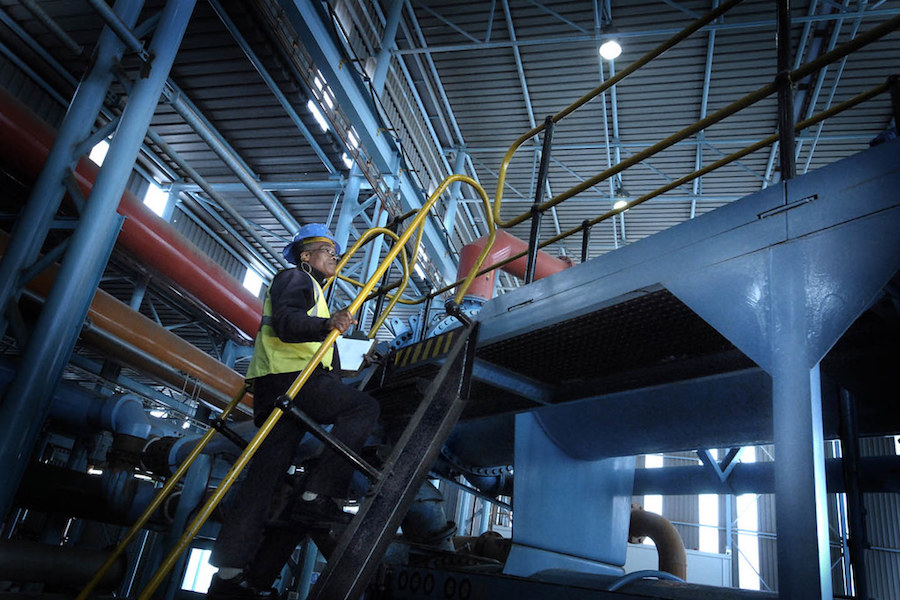Flush from soaring platinum prices, Sibanye-Stillwater hunts for gold

Sibanye-Stillwater is at the centre of deal talks in the gold sector but it may see its desire to create a South African gold champion thwarted as peers cut exposure to the country.
Sibanye CEO Neal Froneman, 61, last month floated the idea of a merger with Johannesburg-listed AngloGold Ashanti and Gold Fields arguing consolidation is needed for the country’s gold miners to compete globally.
Speculation has mounted that Sibanye, the world’s biggest platinum producer, may bid for one or both of its South Africa-listed peers with some assets potentially being hived off to a third party.
Both AngloGold and Gold Fields have shed most of their South African assets to focus on higher returns elsewhere as mining companies struggle with rising costs, volatile labour relations and power disruptions. Gold Fields retains one mine, South Deep.
Higher gold prices in 2020 also helped Sibanye pay down debt after a spate of acquisitions including a 2019 takeover of London-listed Lonmin
A Sibanye spokesman said the miner is interested in a mid-tier gold company with more than 1 million ounces in annual output and operations outside South Africa.
He declined to comment on whether it was already in talks with any companies.
With a market value of 195 billion rand ($13.39 billion) Sibanye, which gets less than 20% of its earnings from gold currently, wants to attract a broader shareholder base.
“You can do 10 small transactions but that’s probably going to take you 10 years. Or you could do one or two large transactions and significantly increase your size and become relevant,” Froneman said last month at a mining roundtable.
Sibanye has long wanted to boost its gold exposure outside South Africa, where declining grades and persistent power outages pose challenges.
Soaring platinum, rhodium and palladium prices have boosted its coffers and helped its share price outpace peers.
“Mr. fix-it”
Froneman, nicknamed “Mr. Fix-It” for his successful turnarounds in the 1990s, is a veteran dealmaker but some bankers and analysts said a deal would not hold much value for either AngloGold or Gold Fields.
“There’s only South African assets in Sibanye on the gold side and (the two miners) have spent the last 10 years getting out of South Africa,” said Rene Hochreiter, mining analyst at NOAH Capital Markets.
With an interim CEO since Kelvin Dushnisky stepped down at AngloGold last year and Chris Griffith taking the top spot at Gold Fields only this month, both companies have looked vulnerable to a takeover, as the number of top-tier assets available grows thin.
The resignation last month of Gold Fields board member Rick Menell, who is also an independent non-executive director on Sibanye’s board, has further stoked speculation of a tie-up between the two companies.
AngloGold said it was focused on its organic growth strategy while Gold Fields declined to comment.
“Unless he comes in with an all-cash proposal, which is highly unlikely, shareholders at either of the two companies will not be easily convinced by the rationale of being taken over by Sibanye, which is first of all a South African miner,” a banking source said.
The value of mining sector M&A bounced back in the second half of 2020, driven by higher gold prices, according to S&P Global Market Intelligence.
Higher gold prices in 2020 also helped Sibanye pay down debt after a spate of acquisitions including a 2019 takeover of London-listed Lonmin.
Sibanye, which was formed when Gold Fields spun off some of its assets in 2013, typically invests in a counter-cyclical way and is betting that gold prices will continue to retreat from 2020 highs as COVID-19 vaccines boost economic growth, Froneman said in a Kitco News interview last month.
The miner, which also wants to acquire more battery metals assets, was rumoured last year to be in talks to buy Canadian gold miner Kinross Gold Corp.
At the time, Froneman said the high gold price meant any deals would not make commercial sense.
A successful mega-merger would cement his reputation as a savvy dealmaker as he nears retirement.
“Neal has tried to position himself as the champion of the mining industry in South Africa,” an industry lawyer said.
“It’s an elegant exit for him.”
($1 = 14.5639 rand)
(By Tanisha Heiberg, Helen Reid, Jeff Lewis and Clara Denina; Editing by Emelia Sithole-Matarise)
{{ commodity.name }}
{{ post.title }}
{{ post.date }}

Comments